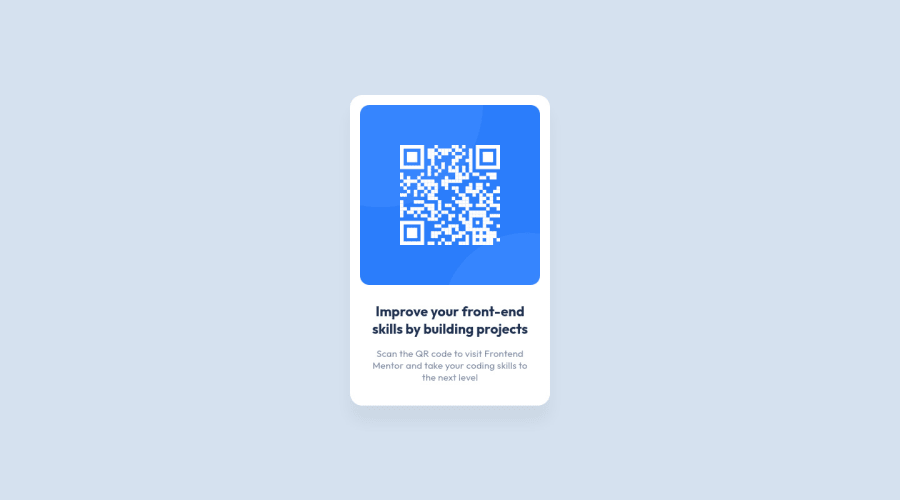
Design comparison
SolutionDesign
Solution retrospective
I have not found difficulties by the way I learnt how to use git pages and I familiarized with frontend mentor process. I had a problem with the img tag in particular with the src attribute: when I used:
<img src="../qr-code-component/images/image-qr-code.png" alt="qr code">It worked online But at the very beginning, i used this path:
<img src="/images/image-qr-code.png" alt="qr code">Look at the path! It was a bit different. It was working with the Local "Live server" function of VS code, so I said great! but not working online in the github pages. (Not working means that the image did not show up).
Why do i have to change the path and write in that way to make it work online too?
Community feedback
Please log in to post a comment
Log in with GitHubJoin our Discord community
Join thousands of Frontend Mentor community members taking the challenges, sharing resources, helping each other, and chatting about all things front-end!
Join our Discord
